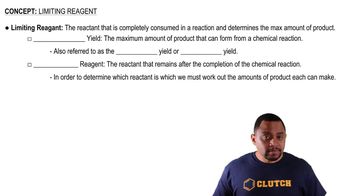Textbook Question
The discovery of hafnium, element number 72, provideda controversial episode in chemistry. G. Urbain, a Frenchchemist, claimed in 1911 to have isolated an elementnumber 72 from a sample of rare earth (elements 58–71)compounds. However, Niels Bohr believed that hafniumwas more likely to be found along with zirconium thanwith the rare earths. D. Coster and G. von Hevesy, workingin Bohr's laboratory in Copenhagen, showed in 1922 thatelement 72 was present in a sample of Norwegian zircon,an ore of zirconium. (The name hafnium comes from theLatin name for Copenhagen, Hafnia). (c) Solid zirconiumdioxide, ZrO2, reacts with chlorine gas in the presenceof carbon. The products of the reaction are ZrCl4 and twogases, CO2 and CO in the ratio 1:2. Write a balanced chemicalequation for the reaction.




